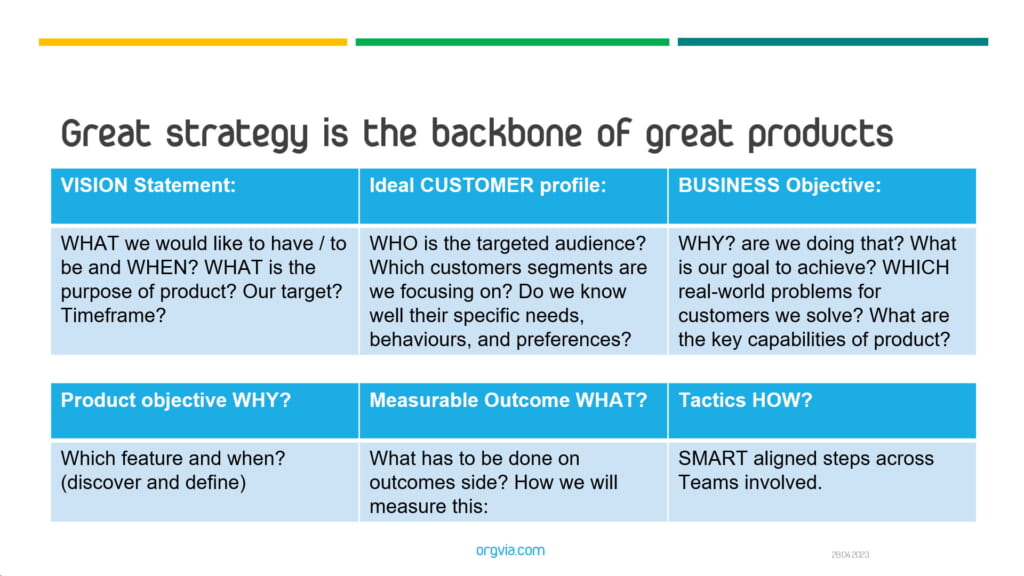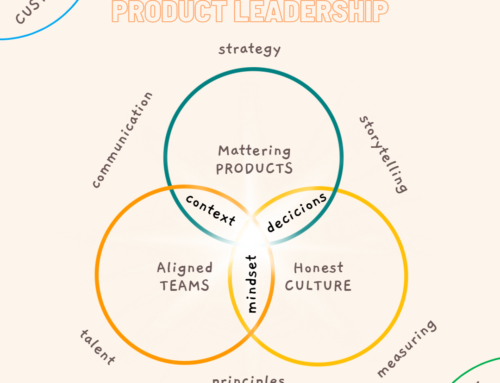Strategy is the guide to choosing what to do by priorities and guardian for making decisions in an environment with limited resources. Every good strategy has to have understandable milestones and tactics how to achieve. It has to be measurable to get to us continuous feedback if we are on a good track. Strategy is also a crucial backbone in balancing priorities every day, but not losing direction and also focus on mid-term and long-term goals at the same time.
So how should the strategy be built upon? First, you have to start with few crucial basic questions:

When creating a product strategy, there are several important questions that you should ask first to ensure that your strategy is well-informed and effective. Here are some key questions to consider:
- What is the purpose of the product? Define the problem that the product is intended to solve and the benefits it will offer to the customer.
- Who is the target audience? Identify the specific customer segments that the product is intended for and their specific needs, behaviours, and preferences.
- What are the key features and capabilities of the product? Determine the specific functionality and design elements that will be required to meet customer needs and differentiate the product from competitors.
- How will the product be positioned in the market? Define the product’s unique selling proposition (USP) and how it will be positioned against competitors.
- What is the pricing strategy? Determine the appropriate pricing strategy for the product based on factors such as production costs, competition, and customer value.
- What is the distribution/delivery strategy? Identify the channels through which the product will be sold and distributed to customers.
- What is the marketing strategy? Determine the specific tactics that will be used to promote and market the product, including advertising, PR, social media, and other channels.
What are the key metrics for success? Identify the specific metrics that will be used to measure the success of the product strategy, such as sales volume, customer satisfaction, and market share.
By answering these questions, you can create a comprehensive and effective product strategy tailored to your target customers’ needs and preferences, while also setting clear goals and metrics for success.





